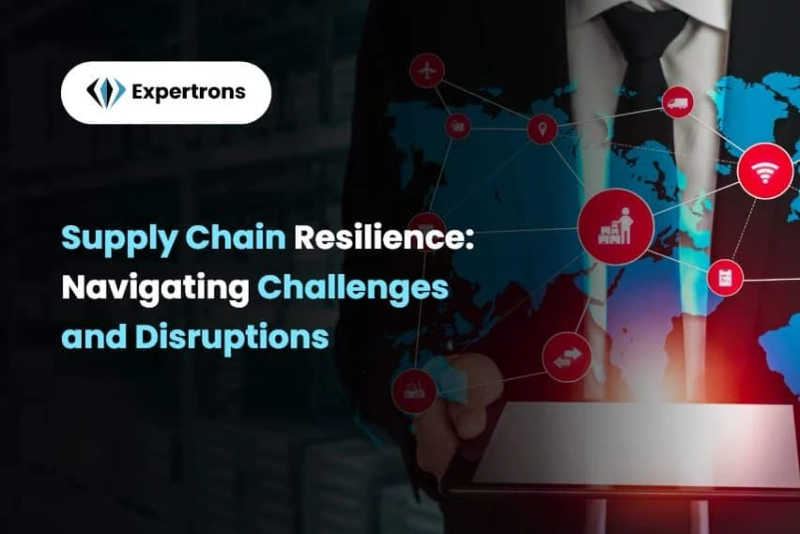Introduction
The modern world runs on a complex web of interconnected supply chains, delivering goods and services from across the globe. But this intricate network is increasingly vulnerable to disruptions, from natural disasters and pandemics to geopolitical tensions and economic shocks. Building supply chain resilience – the ability to adapt and thrive in the face of these challenges – has become a critical business imperative.
The Landscape of Disruption
Global Interdependence: Globalization has interwoven supply chains, making them susceptible to disruptions in far-flung corners of the world. A factory closure in China can impact production in Europe, while a port strike in the US can disrupt deliveries to Asia.
Unpredictable Events: Pandemics like COVID-19 and natural disasters like hurricanes can bring entire supply chains to a standstill, highlighting the need for agile contingency plans.
Technological Advancements: While technology can improve efficiency, it also introduces new vulnerabilities. Cyberattacks on logistics systems or dependence on automation can cripple operations.
Building a Resilient Supply Chain
Visibility and Transparency: Gaining real-time visibility into your entire supply chain, from suppliers to distributors, is crucial for identifying and mitigating risks. Investing in data analytics and digital platforms can enhance transparency and allow for proactive decision-making.
Diversification and Redundancy: Relying on a single source for critical materials or transportation routes can leave you vulnerable. Diversifying your supplier base and investing in alternative transportation options can create redundancy and mitigate risks.
Agility and Adaptability: Rigid supply chains crumble under pressure. Building flexibility and adaptability allows you to quickly adjust to changing circumstances, whether it\'s rerouting shipments or finding alternative suppliers.
Collaboration and Communication: Strong partnerships with suppliers, logistics providers, and customers are essential for navigating disruptions. Open communication and collaboration can help identify solutions and minimize the impact of unforeseen events.
Investing in Expertise
Developing supply chain resilience is an ongoing process that requires continuous learning and adaptation. The Expertrons’ PG Certification in Advanced General Management powered by AIMA and approved by AICTE, Govt of India can equip you with the knowledge and skills needed to navigate the complexities of modern supply chains. This comprehensive program covers a wide range of topics, empowering you to build and maintain a resilient supply chain that can withstand any challenge.
By embracing a proactive approach to supply chain resilience, businesses can not only weather disruptions but also emerge stronger and more competitive. Remember, in today\'s volatile world, resilience isn\'t just a good idea – it\'s a matter of survival.
Ready to take your supply chain to the next level of resilience? Visit the Expertrons website to learn more about the PG Certification in Advanced General Management and start building a future-proof supply chain for your business.
Frequently Asked Questions
- Why is supply chain resilience so important now?
The globalized world creates a dependency on interconnected chains. Disruptions like pandemics, natural disasters, and political instability can cause major setbacks. A resilient chain adapts and keeps business flowing.
2. What are the biggest challenges to supply chain resilience?
Lack of visibility, reliance on single sources, and rigid infrastructure make chains vulnerable. Additionally, unpredictable events and tech dependence amplify risks.
3. What are some key strategies for building supply chain resilience?
Invest in data analytics for real-time visibility, diversify suppliers and transportation, develop flexible contingency plans, and foster strong partnerships with logistics providers and customers.
4. How can technology help improve supply chain resilience?
Digital platforms and data analytics provide real-time insights, enabling better risk management and faster adaptation. Automation can also streamline processes and optimize resource allocation.
5. How can I measure the resilience of my supply chain?
Track key metrics like lead times, inventory levels, and delivery performance. Conduct stress tests to identify vulnerabilities and gauge your chain\'s ability to recover from disruptions.
6. Where can I learn more about building a resilient supply chain?
Programs like the Expertrons PG Certification in Advanced General Management equip you with the knowledge and skills to navigate supply chain complexities and build resilience. It covers risk management, strategic sourcing, logistics, and digital transformation.
Author:
Aditya Sanjay Sakhare



